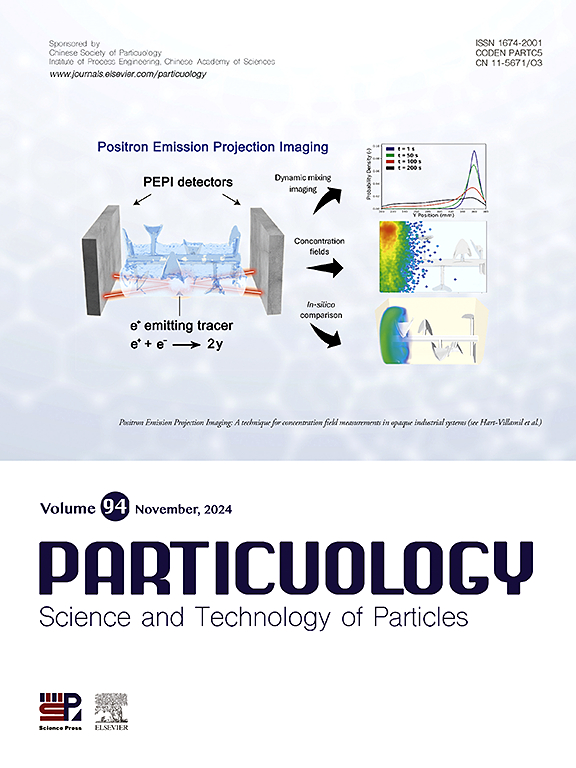Minimum fluidization velocity prediction of Geldart A dense medium in gas-solid separation fluidized bed
IF 4.1
2区 材料科学
Q2 ENGINEERING, CHEMICAL
引用次数: 0
Abstract
The minimum fluidization velocity is a pivotal parameter in the study of fluidization behavior within air dense medium fluidized beds, significantly affecting the design and operational efficiency of these systems. This research explores the fluidization characteristics of Geldart A magnetite particles and Geldart B magnetite powder particles through experimental investigations. The results show that the minimum fluidization velocity of Geldart A and Geldart B particles differs due to both particle size and density. Operating conditions, such as gas distribution uniformity and flow rate fluctuations, also have a significant impact. These findings offer valuable guidance for improving the design and operation of fluidized bed reactors. To accurately estimate the minimum fluidization velocity of Geldart A magnetite powder particles, this study extends classical equations and introduces new correlation coefficients. A summarized and analytical comparison of literature data and experimental results data demonstrate that the proposed correlation coefficients are both accurate and reliable within the defined range, with a prediction error of less than 0.2 cm/s when validated against literature and experimental data. This study furnishes experimental evidence and theoretical insights into the fluidization behavior of diverse particle types, thereby facilitating the optimization of fluidized bed design.

求助全文
约1分钟内获得全文
求助全文
来源期刊

Particuology
工程技术-材料科学:综合
CiteScore
6.70
自引率
2.90%
发文量
1730
审稿时长
32 days
期刊介绍:
The word ‘particuology’ was coined to parallel the discipline for the science and technology of particles.
Particuology is an interdisciplinary journal that publishes frontier research articles and critical reviews on the discovery, formulation and engineering of particulate materials, processes and systems. It especially welcomes contributions utilising advanced theoretical, modelling and measurement methods to enable the discovery and creation of new particulate materials, and the manufacturing of functional particulate-based products, such as sensors.
Papers are handled by Thematic Editors who oversee contributions from specific subject fields. These fields are classified into: Particle Synthesis and Modification; Particle Characterization and Measurement; Granular Systems and Bulk Solids Technology; Fluidization and Particle-Fluid Systems; Aerosols; and Applications of Particle Technology.
Key topics concerning the creation and processing of particulates include:
-Modelling and simulation of particle formation, collective behaviour of particles and systems for particle production over a broad spectrum of length scales
-Mining of experimental data for particle synthesis and surface properties to facilitate the creation of new materials and processes
-Particle design and preparation including controlled response and sensing functionalities in formation, delivery systems and biological systems, etc.
-Experimental and computational methods for visualization and analysis of particulate system.
These topics are broadly relevant to the production of materials, pharmaceuticals and food, and to the conversion of energy resources to fuels and protection of the environment.
 求助内容:
求助内容: 应助结果提醒方式:
应助结果提醒方式:


